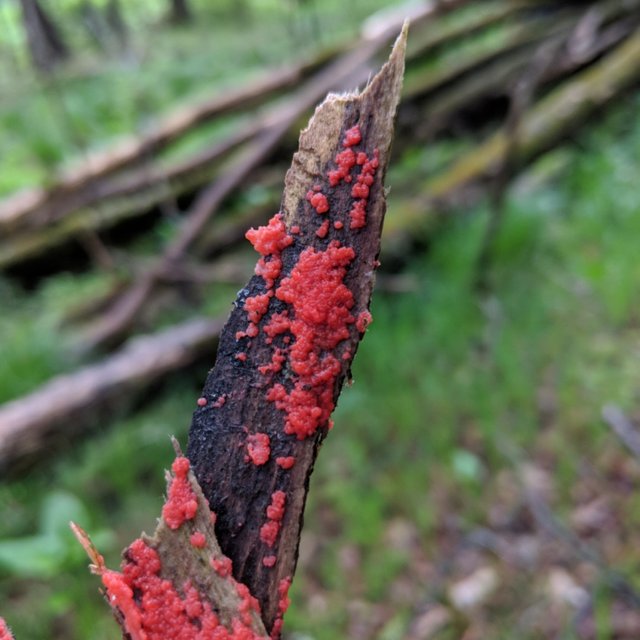Slime Mold Plasmodium - Likely Lycogala
This photo is a companion piece to yesterday photo of a fresh Lycogala epidendrum colony and it should shine a light on how those bizarre structures come to be.
Myxomycetes start life as individual cells conglomerating into a cooperative, undifferentiated mass called a plasmodium. Not every Myxomycete has a plasmodial stage, but Lycogala sure does. What that means is that when the Lycogala cells have gorged themselves sufficiently, directly consuming all the food they can, microscopically sucking the nutrients out of things, and when conditions are right, the Lycogala cells make a shared decision. They join together in a mass of slime and literally move around in search of a good place to undergo their transformation into the final fruiting body of their species.
If I were able to set up a time lapse looking at this slime mold in the forest, you would literally be able to see it moving around like a goddamn alien. Then, once it had found a place it was satisfied with, you would see it transform from undifferentiated slime into distinct spore bearing structures, or sporangia. Those are the pink, slime filled things I posted yesterday!
One thing to keep in mind is that it is very hard to know for certain what species a given plasmodium belongs to before the development of sporangia. However, I am fairly certain from context clues that this is Lycogala, both because of the similar coloration, and because of the large number of nearby Lycogala colonies already maturing right nearby where this was found.
Go ahead and compare this photo to yesterday's photo and be amazed! Then go read about slime molds more completely in my larger post and accompanying source material.

That is awesome. I heard they used an experiment with slime mold in China to map out more efficient subway systems.
Someone sure did - using bits of nutrition and plasmodium they found that Plasmodium naturally developed the most efficient routes to as yet undiscovered nutrition sources, which turned out to mimic the Tokyo subway system layout quite well.
At some point I hope to get some time lapse of this stuff in myself. So far I've only caught the less exciting non-plasmodial development on time lapse in this brief video
(This is my story account fyi)